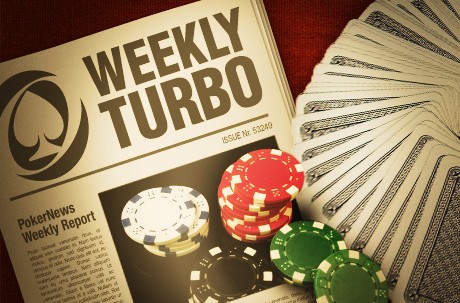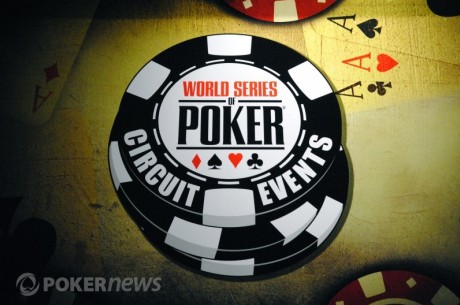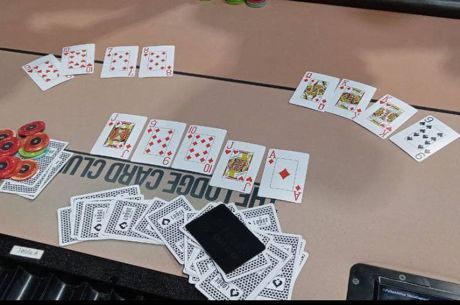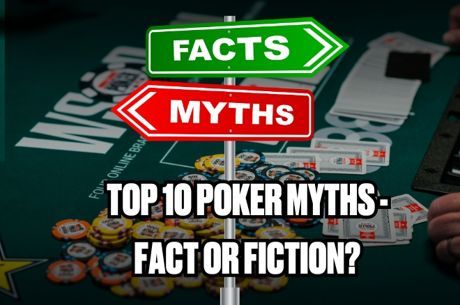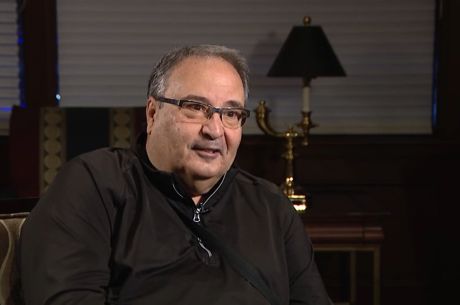PokerNews Debate: Are the WSOP Circuit Enhancements Actually Enhancing the Tour?
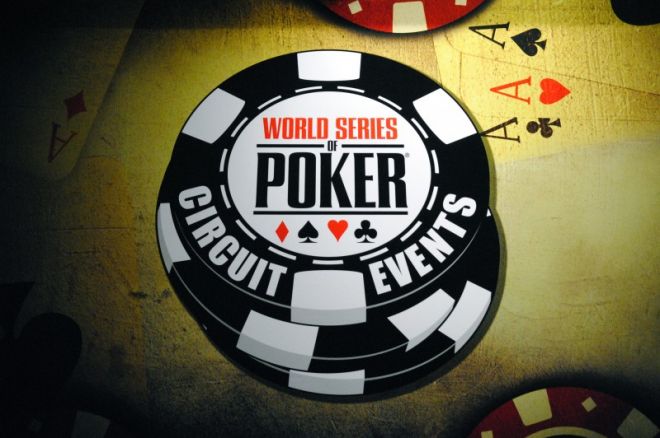
In July, the World Series of Poker announced the schedule for the 2011-2012 WSOP Circuit's, its eighth season. Beginning next month with a brand new stop in Bossier City, the Circuit will be displaying some new "enhancements" to the tour.
The two big changes are as follows. First, the $1,600 Main Event at each stop will be played as re-entry. Players will be allowed to enter both a morning flight and an evening flight on the starting day of the tournament if they choose to do so. Second, there will be no $10,000 Regional Championships offered. With these being two of the biggest and most interesting changes, the question is, are they actually better for the Circuit? PokerNews' Donnie Peters and Rich Ryan debate.
Donnie Peters believes playing the Main Events as re-entry is a bad idea
The old saying goes, "If it isn't broke, don't fix it," and that should apply here. Last year, the WSOP revamped the Circuit completely. It slashed the Main Event buy-ins, introduced a points-ranking system and a $1 million National Championship Freeroll, incorporated four $10,000 Regional Championships and added some new stops. All of those proved to be great for the Circuit as numbers increased everywhere. Players thoroughly enjoyed the stops they attended from a poker-playing standpoint and the Circuit was put right back on the map as one of the premier tours in the world. Why go and change things?
A couple of years ago, the WSOP did away with rebuy tournaments at the WSOP in Vegas. A lot of players didn't like rebuys and felt that the pros with deeper pockets would be able to "buy" a bracelet by gambling early. Because of this line of thinking, a lot of amateur players stayed away from the rebuy events and stuck to the events with a single buy-in. Now the WSOP is going the opposite direction with the new season of the WSOP Circuit �� a tour that's majority is comprised of amateur players. With the idea that players with deeper pockets can get two shots in an event instead of just one in the amateurs' minds, some of them may be deterred from playing.
This seems more like an attempt to get the numbers to climb once again after having such a successful increase last time around. Yes, the number of total entrants per Main Event may rise and the prize pools will increase because of that, but the number of unique individuals who actually play shouldn't increase that much. In fact, it may actually drop if players feel at a disadvantage. Just think, if a player knows his shot in one event is up against many players with two shots, he's already at a disadvantage and will more than likely not play. With the WSOP Circuit being made up of so many amateur players, this is very much a reality.
If you take a look back to what the Bellagio did with some of its tournament series a couple years ago, it converted almost every prelim to $1,000 no-limit hold'em events and made them all rebuys. The field sizes took a massive hit and at one point, the players were trying to petition the Bellagio to change it back. Something similar seems to be happening here and it doesn't need to be happening. Like the saying says, "If it isn't broke, don't fix it."
Rich Ryan welcomes the re-entry tournaments
With the poker economy in disarray, tournament circuits have to do everything they can to maintain desirable prize pools. So the WSOP is making every main event a re-entry tournament, allowing players to register for a second Day 1 heat if they are eliminated from the first. However, unlike most re-entry tournaments, both heats will take place on Day 1 so that the WSOP won��t have to add an extra day to each main event.
This is a great way to increase field sizes, increase prize pools, and entice more professionals to participate. Very few players will skip events because of the re-entry format, while most players are happy knowing they have a slightly larger margin of error and an inflated prize pool. The re-entry format is especially attractive to pros who are usually unwilling to play lower buy-in events, because they have the opportunity to fire off two bullets. Now, if they��re coolered (or just decided to donk off their stack in the first level), they can just re-enter and play in the second flight.
The argument that players can ��buy�� wins in re-buy tournaments is silly, but it has merits. The argument that players can ��buy�� wins in re-entry tournaments is farcical. In re-buys you can create an advantage by continuously bombing your stack until eventually you have a ton of chips or, at the very least, there are a lot of chips on your table to extract once the re-buy period is over. With re-entry, you begin the second flight with the starting stack against other players with starting stacks. Sure, if you know you��re going to re-enter no matter what, you can gamble a little bit with your first bullet. If you��re lucky, you��ll build a stack, but you don��t have the liberty to shove an infinite amount of times like you do in a re-buy.
Ultimately, Caesars is looking to increase its profitability �C and who can blame them. They��re in the business of making money, and as long as they��re not compromising the integrity of the game, then so be it.
Donnie Peters believes the removal of the $10,000 Regional Championships is also a bad idea
To entirely remove the $10,000 Regional Championships is a bad idea. In fact, they were a bad idea to ever incorporate to begin with. The idea behind them is great, but the price tag is simply too high, especially with the way the economy is and the state of poker right now. These four events were what drew the big names back to the WSOP Circuit. The problem was, at $10,000 a pop in less-than-ideal locations, the pros didn't want to travel to them. Still, the WSOP didn't need to remove them altogether.
When something doesn't work out, you don't need to just toss it by the wayside, as seems to be the case here. How about lowering the buy-in to these Regional Championships and keeping them on the schedule? Now, of course, one could argue that lowering the buy-in wouldn't attract the big names that a $10,000 price tag does, but it would in turn add some players who can't afford to play a $10,000 event, but will play something in the $3,500 to $5,000 range. With the state of poker right now and the way the economy is, $10,000 buy-ins just don't get the same numbers they used to. There's no online qualifiers, we're well past the poker boom and the money just isn't there anymore. If you cut the buy-ins to $4,000 for example, you'd still get a nice turnout of players and keep the event a bit more prestigious than the $1,600 Main Event. This could especially be done if the Main Events weren't changed to re-entry events. After giving it a shot at lowering the buy-ins to these, another evaluation can and should be made where the decision to keep them on the docket is determined. If they fail to reach expectations once again, then you can cut them.
Another idea for the Regional Championships would be to simply make four of the stops on the Circuit have a larger buy-in Main Event, say $5,000. The WSOP could call these "Regional Championships" and have the increased buy-in Main Events take place at the stops with the largest turnouts in the past, like Hammond, Atlantic City and Las Vegas. The points could be weighted a bit more for these events and even adding a little bit of money to the prize pool like $50,000 to $100,000 could help attract more players. This is another option that could be better than simply cutting them out altogether.
Rich Ryan disagrees, believing that the WSOP-C should stay in its lane
Over the past two years, the WSOP-C has completely rebranded itself as a tournament circuit for the everyday player. By lowering buy-ins and expanding the tour stops, the WSOP brand now reaches more of its fans, giving them an opportunity to compete for a circuit ring and possibly the National Championship. The majority of the WSOP-C participants will not miss the four $10,000 Regional Championship events because they can��t afford to play in them, making this a good decision by Caesars.
There are two things (among many) that businesses can do to succeed: stay in their lane, and act before the rest of the market does. Staying in your lane is paramount. If you exhaust resources trying to be something you��re not, then you end up compromising whatever it is you��re actually good at. This past year the WSOP-C saw growth across the board, and it��s because it shifted its focus from professional players to amateurs. From Durant, Oklahoma, to San Diego, California, there are plenty of small pockets in America that can sustain a series of smaller buy-in events. Only a few places (Las Vegas, Atlantic City) are capable of hosting bigger buy-in events. The Heartland Poker Tour pioneered this trend, hitting middle-America, and now the WSOP-C is looking to replicate this formula with a more recognizable brand.
Acting before the rest of the market can be dangerous, but if you��re right then you can jump ahead of the pack. Right now, the market for high buy-in events is shrinking because there are too many tournaments on the schedule. This oversaturation has stretched the market thin, leading some tours to lower their buy-ins. The WSOP-C jumped on this early, initially reducing the entry to its main events, and now it is taking it a step further by removing the Regional Championship events. The WSOP recognizes that it doesn��t need professional players to play in their events (there are no cameras), and are content with raking in John Doe��s money.
Will the Regional Championships be missed from a reporting standpoint? Absolutely, it��s always nice to cover a field filled with familiar faces. Ultimately, however, the WSOP-C is a business, and they are making sure that they stay in the black. I can��t blame them for that.
To keep on top of all the latest in the poker world, be sure to follow us on Twitter and like us on Facebook.



